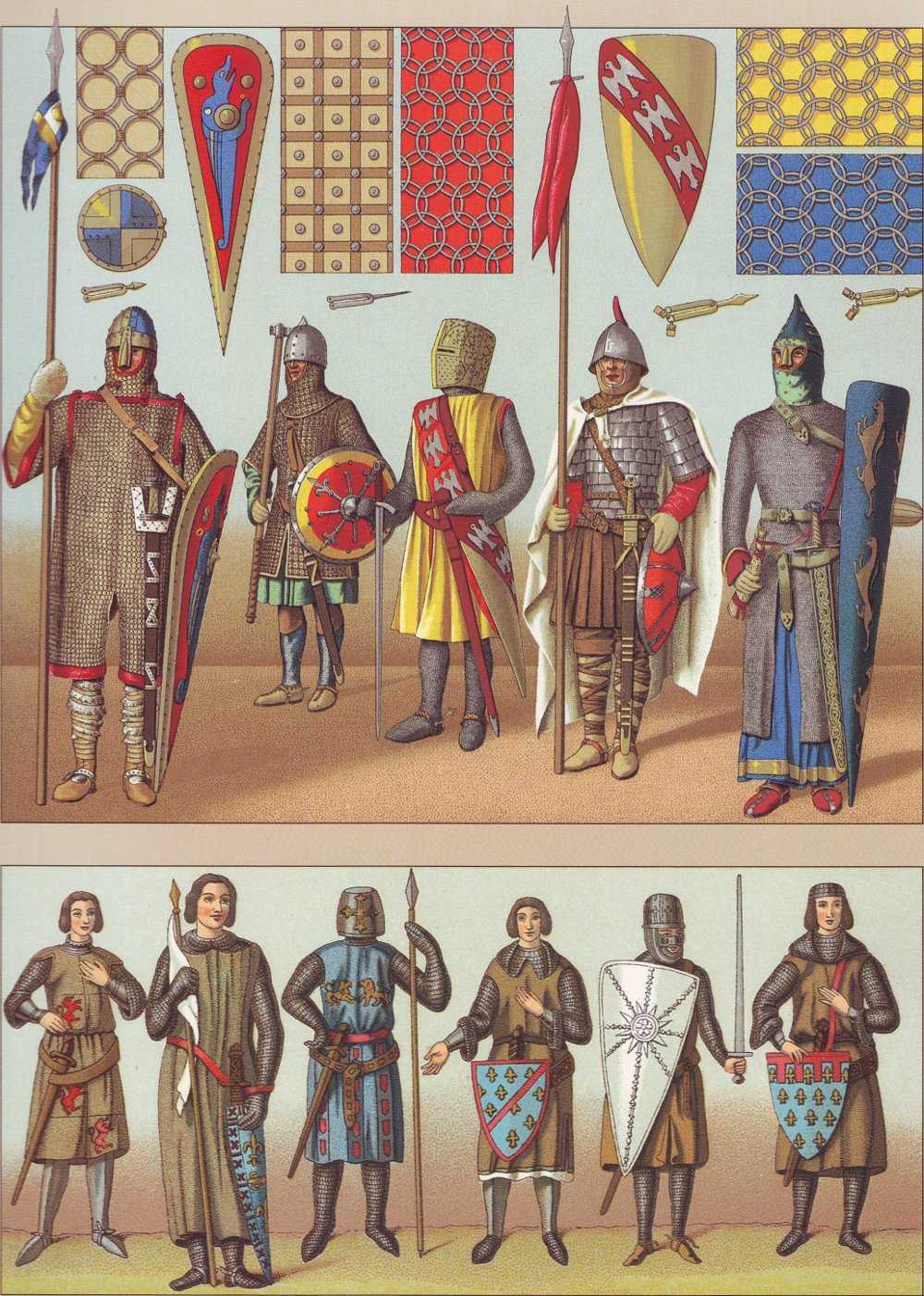 Click for a larger image of the lower register. |
ONE OF THE MOST IMPORTANT INVENTIONS of the early Middle Ages was that of the mail coat. This protected a soldier as well as sheet metal - if not better, since it provided so many more angles from which to deflect a sword cut - but, just as important, allowed the wearer a much greater freedom of movement. Mail developed from the 10th to the 14th centuries, increasing in complexity of design and efficiency.
1.1 A Norman knight of the 10th century, wearing a protective coat made of a strong material - sometimes leather - on to which have been sewn iron rings. The basic coat consists of a tunic with short sleeves that ends in a pair of leggings.
The iron rings are simply laid side by side, and held in place by strong braid and stitches (see detail above). They are not inter-linked, as is the case with chain mail. Nevertheless, this type of mail was such an effective defence against blows that knights sometimes dispensed with the leather doublet that was usually worn beneath it to prevent bruising.
The helmet is made of iron and bronze, and has a fixed nose-piece.
1.2 A different type of mail (see detail above) consisting of strips of beaten iron and nails rivetted on to a leather coat. This dates from the reign of Hugh Capet, King of France at the end of the 10th century.
1.3 A 13th-century knight's equipment, consisting of a red tunic under a hauberk that extends over the head to form a hood, then a coat of chain mail (see detail above). A well-padded strip of material is placed on top of the hood, to support the cylindrical helmet, and the chain mail is covered with a coat of red silk.
The shield is still pointed, as in previous centuries, but is now much smaller and more manoeuverable.
1.4 A soldier from the beginning of the ninth century - the time of Charlemagne. His armour consists of flat plates of iron rivetted on to a base of thick leather. Below this is a skirt, like a kilt, of thick leather.
His helmet is made of four plates of iron, which form a protective edge at the temple. His breeches are made of leather, and strips of iron have been sewn on to them for extra protection. The brass-handled sword has grooves cut all the way along its blade, following a custom that persisted until the 13th century.
1.5 A 12th-century knight, carrying a shield made of painted wood that is long enough to protect his whole body. A long chain mail coat is worn over a long robe made from yellow and blue wool. He is also wearing leather gloves and shoes, gilded spurs and a helmet of painted iron.
 Click for a larger image of the lower register. |
2.1 & 2 Jakennes Loucart, one of the King's knights, with his insignia of a lion emblazoned on his tunic. Such insignia were popular, though they had not at this stage been formalized as coats of arms. His shield is padded and stitched round on the inside, and his gloves have a detachable thumb-piece.
2.3 Hugh de Chalon, wearing an all-enveloping mail coat and a tunic bearing his colours.
2.6 Philip of Artois with a shield bearing a formal coat of arms.